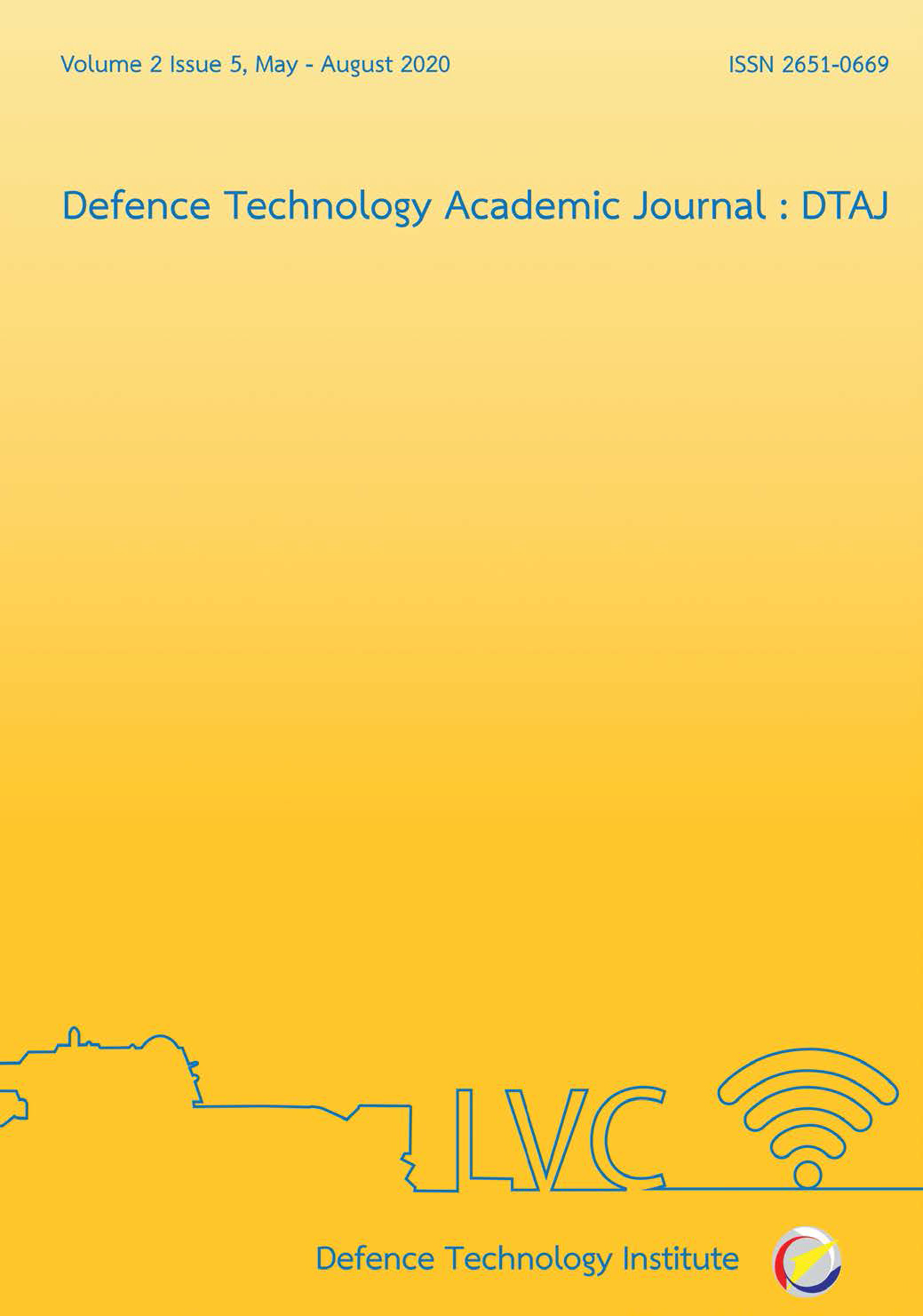Test of Electrochemical Performance LiSi/LiCl-KCl-MgO/FeS2 Single Cell for a Thermal Battery Prototypel
Main Article Content
Abstract
Thermal batteries are specially designed according to the requirements for such military applications which present the need for a high power density battery. Thermal batteries rely on an electrochemical cell to produce an electric energy from the energy released by a chemical reaction with electron transfer. A thermal battery is a non-rechargeable, single use battery that can be stored for a long time without self-discharge. The key composition of the performance of thermal batteries is the chemical reaction between an electrode and an electrolyte. The materials selected for anode, cathode, and electrolyte are also important for energy-stored capacity. In this work, the performance of electrochemical cell was investigated. The experiment was divided into 3 parts to investigate; (1) a half-cell reaction on anode which was synthesized from Li/Si; (2) a half-cell reaction on cathode which was synthesized from FeS2; and (3) a single cell which composed of the anode, cathode, and electrolyte. The charge-discharge test was used to investigate the performance of set-up electrochemical cell. The results showed voltage of 0.20 - 0.25 V on the anode, voltage of 1.6 - 1.8 V on the cathode, and the voltage of 2.66 V for the single Cell.
Downloads
Article Details

This work is licensed under a Creative Commons Attribution-NonCommercial-NoDerivatives 4.0 International License.
Journal of TCI is licensed under a Creative Commons Attribution-NonCommercial-NoDerivatives 4.0 International (CC BY-NC-ND 4.0) licence, unless otherwise stated. Please read our Policies page for more information...
References
R.A. Guidotti and P. Masset. “Thermal activated (thermal) battery technology Part I. Overview,” Journal of Power Sources, vol. 161, pp. 1443-1449, July 2006.
I. Y. Kim, S. P. Woo et. al. “Binder-Free Cathode for Thermal Batteries Fabricated Using FeS2 Treated Metal Foam,” Front. Chem, January 2020.
A.S.Basin, A.B. Kaplun, A.B. Meshalkin and N.F.Uvarov, “The LiCl-KCl Binary System,” Russian Journal of Inorganic Chemistry, vol. 53, No.9, pp. 1509-1511, July 2008.
Ronald A. Guidotti. “Thermally-Related Safety Issues Associated with Thermal Batteries,” Sandia National Laboratories, June 2006.
Patrick Masset, Ronald A. Guidotti, “Thermal activated (thermal) battery technology Part II. Molten salt electrolytes,” Journal of Power Sources, vol. 164, pp. 397-414, October 2006.
Patrick Masset, Ronald A. Guidotti, “Thermal activated (“thermal”) battery technology Part III: FeS2 Cathode material,” Journal of Power Sources, vol. 177, pp. 595-609, November 2007.
CRC Handbook of Chemistry, and Physics, 70th Edition, Weast, R. C., Ed., CRC Press, Boca Raton, FL, p. D-221, 1989.
T. Yu, Z. Yu et. al. “Electrochemical Performances and Air Stability of Fe-doped CoS2 Cathode Materials for Thermal Batteries,” International Journal of Electrochemical Science, Vol. 13, pp. 7590 – 7597, July 2018.
C. F. Chen, H. Y. Li and C. W. Hong. “Molecular Dynamics Analysis of High-temperature Molten-salt Electrolytes in Thermal Batteries” Tech Science Press, Vol.46, no.3, pp.145-163, 2015


